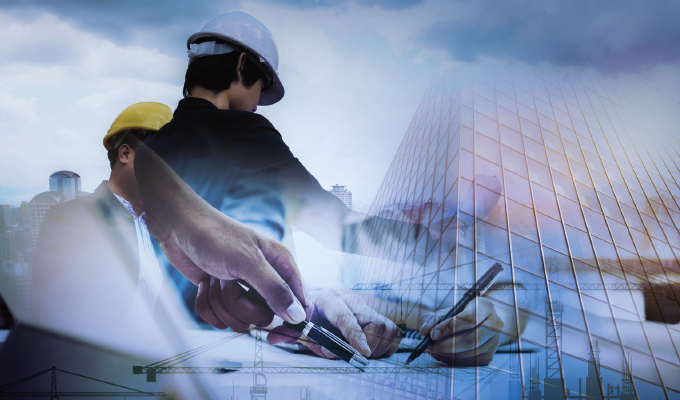Technology, such as BIM, has become a key player in advancing sustainable construction and allowing for a more transparent and successful partnership between stakeholders and professionals. This build/design technology that uses a 3D-model process allows a company to complete workflows related to building design, infrastructure design, and construction. It is its ability to compile and distribute data that makes it a necessary feature for sustainable construction.
SUSTAINABLE CONSTRUCTION
Sustainable construction is a method and style of construction that reduces the impact construction has on the environment. A successful sustainable construction plan allows a company to meet present-day demands without affecting the future’s ability to do the same.
Sustainable construction is a conscientious way of working with specific qualities.
- It uses recyclable and renewable building materials
- Minimizes energy consumption and waste production
- Reduces impact on the environment whenever possible
- Recognizes that the design of a building will define its effects for the rest of its life
- Stretches from conception through the occupation of the structure
These points influence every aspect of the building project and require every team to operate in a delicate balance to ensure a cost-effective and sustainable end product.
LIFECYCLE OF THE BUILDING
Upon completion of the building, sustainable construction continues throughout the lifecycle of the building and considers the resources the now fully built structure requires. With sustainability in mind, a building will require minimal resources throughout its lifecycle.
BIM’S IMPACT
BIM can play a crucial role in sustainable construction throughout the design, construction, and operations phases of building and management.
OBTAINING CERTIFICATIONS
Professionals can place certification requirements in the model allowing regular checks to be taken under the appropriate guidelines. The necessary team can contact the relevant governing body to obtain the certification when all requirements have been fulfilled.
SIMULATING SUSTAINABILITY
BIM also allows professionals to do advanced analysis using simulator tools for projections related to sustainability, environmental impact, and energy efficiency. These simulators use the model’s data, can show how the building will react in different situations and inform the plan for the construction and future renovations.
THE DESIGN PHASE
BIM assists with transparency and efficiency throughout the process when the design phase begins. All data, such as technical aspects, eco-conscious elements, and production schedules, can be added to the model, and every stakeholder can be given access to it.
Data sharing ensures that every team has the information necessary to bring their schedules into line. BIM can provide architects, engineers, and construction professionals with a summary of all products and materials used, which can streamline production for energy utilization.
Throughout the design phase, BIM improves efficiency and can make crucial decisions such as using the most sustainable products and processes. The condensing of information into one place makes it easier for acquisitions to make decisions, and this full transparency will also result in cost savings.
THE CONSTRUCTION PHASE
BIM affects all phases of the project, but its effect on sustainable construction is most evident during the construction phase. With all the necessary data placed on the model, executing a sustainable construction plan from different teams and locations becomes more streamlined with fewer errors.
As a 3D-model process, BIM can deliver 3D virtual prototypes for projects that can be shared between teams and used for stakeholder collaboration. Stakeholders can also test them for logic and sequence using tools built into BIM. Every step of the construction workflow can be reviewed and enhanced, which offers up a variety of benefits throughout ongoing project management. However, the ability to review steps helps to reduce errors, reduce costs related to redundancy, and prioritize eco-conscious solutions, which may be more expensive.
PHASE OF OPERATIONS
Sustainable construction doesn’t end after the construction of the building has been finished. In fact, it begins properly once the facility becomes inhabited and has begun to be used for its intended purpose. Until then, all the green ideas worked into the building and certificates it may have earned are only theories until put into place.
With BIM processes, Construction stakeholders can pass on data from the original concept to completion to the new owners. This information can include professional recommendations such as future eco-conscious lighting replacements, schedules for completing maintenance, and proactive ideas to decrease energy consumption.
All of these ideas not only improve the environmental impact of the building by improving its sustainability but also improve the relationship the building company has with the client demonstrating their continued dedication to sustainable construction.
LIFE CYCLE ASSESSMENT
The other benefit BIM can bring is during the life cycle assessment of the structure, which runs during all three phases of sustainable construction. The assessment covers a variety of categories and elements that assessors can use to prolong the lifespan of the building and lessen its environmental footprint.
Historical data from the area, such as air quality and noise pollution, can be inputted and compared to social data that occupants can supply once the building has been constructed. Occupants can also submit information for the model, like the longevity of facilities, eco-design, and energy efficiency.
CLOSING THOUGHT
Ultimately, what BIM does for construction is give the tools and information for a medium to large-size green building project to succeed. It ensures that all players are on the same page and working with the information and data they need to do their jobs well, on time, and with less impact on the environment.
About the Author:
William “Bill” Reynolds is the account executive for New Jersey and emerging markets for Microsol Resources. Bill supports architecture, engineering, and construction firms that focus on the latest solutions to help improve collaboration, data collection, and maximize ROI for any project.
Modern Contractor Solutions, December 2022
Did you enjoy this article?
Subscribe to the FREE Digital Edition of Modern Contractor Solutions magazine.



